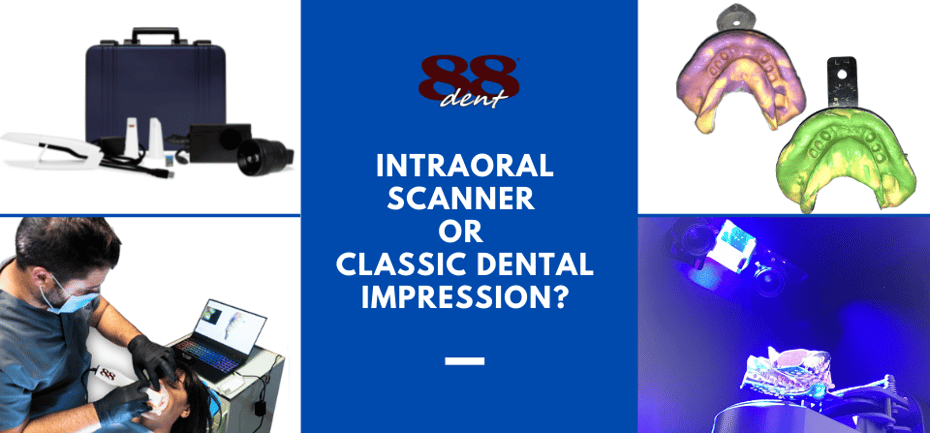
The intraoral scanner is the new frontier in Dentistry, replacing the classic impression made with traditional impression materials and then transformed into a plaster model.
While in the past it was customary to use a plaster cast and impression tray when the need to create a realistic model of the oral cavity arose, today more and more professionals are choosing to use the intraoral scanner. Which solution to choose: intraoral scanner or benchtop scanner?
In the first case the metal impression tray has to be filled with paste and inserted into the mouth for a few minutes until the mixture created has dried and thickened to the right degree. After this time the tray is removed from the mouth to create a plaster model of the patient's arch.
The intraoral scanner, on the other hand, uses a beam of light and cameras positioned on the head of the instrument to capture all the information relating to the oral cavity, from the size of the arches to the positioning of the dental elements. From here, thanks to special software, an extremely precise 3D model of the mouth is created, which essentially replaces the old plaster impression.

Is it better to have a traditional impression or a 3D model made with the intraoral scanner?
If you look at it purely from the point of view of the financial investment, the traditional impression is much cheaper than the investment needed to buy an intraoral scanner, as well as the time needed for a training period to learn how to use it properly and take advantage of all the available functions.
But this is probably where the strengths of the traditional impression end. If we consider the timescales, the use of the traditional impression will be much longer, not only the time taken to make the impression, but also the time the patient has to wait for it, the risk of errors due to shrinkage, expansion and air bubbles, but also the time taken to send the impression to the laboratory where the prosthetic rehabilitation will be produced. In addition, the impression is particularly delicate and therefore easily subject to breakage and damage that would make it useless and require a new one to be made.
With the intraoral scanner, on the other hand, a 3D model of the oral cavity can be obtained in just a few minutes and, if there are any inaccuracies, these can be corrected simply by taking a second measurement. In just a few minutes you can see what you have recreated on the monitor and send the file to the laboratory, which can then proceed to make the implant. It is estimated that using this instrumentation can save as much as a week's time in making the final prosthesis.
In terms of precision, too, this instrumentation is truly impeccable; the margin of error is very small, which will allow the production of high-quality prosthetic products with an optimal fit (obviously, precision will depend on the operator's learning curve).
Finally, let's think about the patient and the discomfort suffered during the execution of the traditional impression. The insertion of the impression tray often provokes a gag reflex with nausea , accentuated by the sense of suffocation and anxiety connected to the insertion of the tray in the mouth. In addition, the time required to wait for the paste to harden is certainly not short. On the contrary, the intraoral scanner does not cause any harm to the patient as it is non-invasive and, if necessary, the operation itself can be paused and resumed at a later date without having to start from scratch.
Are there any other reasons for preferring the intraoral scanner to the traditional impression?
